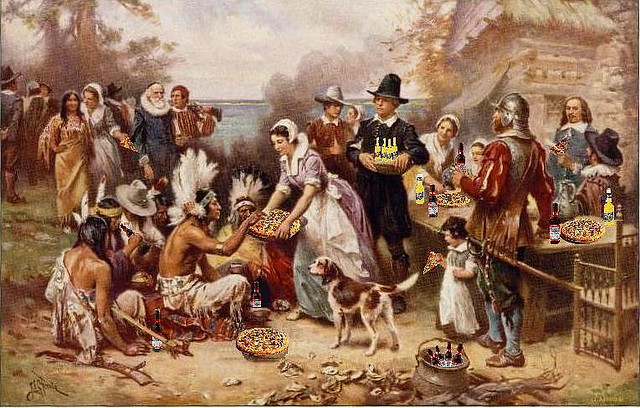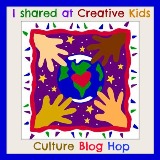
By guest author: Corey Heller
Stories about the origins of the North American celebration of Thanksgiving abound. Some attribute it to the Pilgrim’s prayerful appreciation for having survived an arduous journey across the sea. Others claim that it commemorates the kindness of the Native Americans who helped them survive a cold winter without food. Still others say it stems from the originally pagan tradition of giving thanks for yet another bountiful summer crop.
Whatever the origins of this North American holiday, most of us can agree that it is a holiday motivated by feelings of appreciation, humility, and kindness. At the heart of Thanksgiving is our deepest gratitude for simply being alive to witness one more day. It is about surviving in a world bombarded by uncertainty and change. No one can know what tomorrow will bring, and all we can do is appreciate what we have right here and right now.
Immigration is central to the Thanksgiving story. The New World was a destination for European settlers searching for new beginnings, merchants seeking unlimited resources, and sadly, African slaves transported unwillingly to a strange new land. These newcomers, in turn, inundated and overpowered the Native Americans who had been living on this bountiful land for many generations. Ultimately, they too became immigrants in their own land, as they were pushed farther and farther to unknown territories.
Thanksgiving tells the tale of the settler, each with his or her own personal history. Our ancestors brought traditions tucked away in travel bags between sorrows of lands lost and hopes for a new and better life. Immigration has played an intrinsic role in all Americans’ lives: this movement of peoples has formed America into what it is today.
Because Thanksgiving has such a strong association with immigration, it is a wonderful holiday to share with multilingual and multicultural children and students. It is an exciting opportunity to tie in the role that travel, language, and traditions have played (and continue to play) in this country’s development. It is also a chance to remind children that at some point in our family histories, most of us immigrated to this country and that today’s new immigrants will be the citizens of tomorrow.
There are many different ways to talk about Thanksgiving with children. Do we create for them a magical story of Pilgrims and Native Americans coming together for a mutual feast? Do we focus on generic aspects of thankfulness without mentioning elements of American colonization, or do we take the opportunity to discuss these deeper issues? Ultimately, there are no hard-and-fast rules when it comes to talking about Thanksgiving with children: simply share with them the elements appropriate for their age and interest. Below are some discussion ideas you may want to share with multicultural and multilingual children and students about Thanksgiving.
- Being thankful: Thanksgiving provides us the opportunity to explore what it means to be thankful on many levels. Being thankful for something may not always be as clear cut as it seems. For example, the European settlers who received land in the New World were very thankful yet it meant that those who already lived on those lands lost their homes in the process. Realizing this contradiction is important for children. Ask children if they can think of examples in their own lives where they were thankful for something that actually made someone else sad, upset or envious.
- Showing appreciation despite cultural differences: It can be difficult for children to know how to show gratitude and appreciation, especially children who have not yet mastered English. Helping children understand how their words and actions are interpreted by others can give them essential tools for life. Act out different ways of showing appreciation, paying special attention to behaviors such as eye-contact and tone of voice. Ask children to share how appreciation and affection are shown in their family’s culture and why some of these ways might be misunderstood in the United States.
- The early settlers: Children are fascinated to learn that over the years of American colonization, immigrants have come from all over the world. As with today, they spoke a multitude of languages and had to learn how to work with one another, despite their different cultures and languages. On a large wall map, show children the many countries from which immigrants came. Show children how far many immigrants traveled to arrive in the New World and how hard it would have been for them to go back to their country of origin. Encourage children to talk about where their own families originally came from, pointing to the places on the wall map.
- Reasons for immigration: The first European settlers had a variety of reasons why they would risk death and disease to come to the New World. Help children learn what these reasons may have been and why someone would risk their lives for this. Talk with children in class about their own families (or those they know) who may have immigrated to the United States and why they may have chosen to do so. Talking about specifics like this helps put a human face on immigration.
- The search for a better life: The early settlers in the New World were most likely surprised by what they saw when they first arrived in the New World. Help children understand how hearing stories about new places can give people unrealistic expectations. Many settlers probably didn’t know what they were getting into. Quite a few didn’t survive the trip over the ocean. Others died within a few months of arrival. Promises of endless land were met with the realities of having to create everything from scratch: homes, farmsteads, and towns. Talk with children about why their own families may have immigrated to the United States, including both the positive and more challenging aspects of the move.
Discussing topics like these listed here can be a way to help multilingual and multicultural children and students learn to be a part of their new culture. Regardless of what themes you focus on when talking with children and students about Thanksgiving, the ultimate goal is to help all children realize how much they have to be thankful for. If our children and students can walk away feeling more connected to their friends, family and community, it will have been time well spent.
Happy Thanksgiving!
Corey Heller is the founder of the website Multilingual Living (www.multilingualliving.com) where she shares her knowledge about raising multilingual and multicultural children. She also gives seminars and presentations about language development and multilingualism. She and her German husband live in Seattle where they raise and homeschool their three children, ages 6, 8 and 10, in German and English.
© Language Lizard, LLC.
Photo credit: Mike Licht, NotionsCapital.com
Want to use this article in your e-zine or web site? Contact Language Lizard President and Founder, Anneke Forzani.
This blog post is linked with the monthly Creative Kids Culture Blog Hop. Be sure to check out other bloggers’ tips, teaching strategies, and resources!


This is a great post! You’ve made wonderful suggestions for discussions about Thanksgiving and the concept of thankfulness. Thank you for sharing! 🙂
[…] Thanksgiving and Immigrant Cultures […]
[…] thing is clear to me. History and politics pale in comparison to the love and the dedication of families, even in the face of […]
Here I can get a clear understanding about Thanksgiving. Thanks for your information!
[…] For ideas about discussing and celebrating the Thanksgiving holiday with your multicultural students, make sure to read our post Thanksgiving and Immigrant Cultures! […]